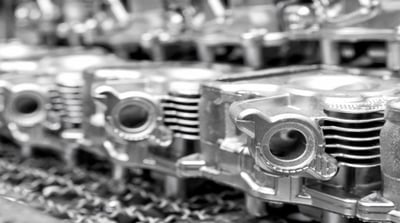Defects In Sheet Metal Products

Let s discuss potential sheet metal rolling defects causes and remedies.
Defects in sheet metal products. Converting liquid metal to a solid form is done in a process called. This is most likely to be where the sheet has been bent under tension round an angle as extra thinning will occur there. Choosing the wrong size blank under estimating the number of forming tools required or encountering an unexpected wrinkle or split can be very costly if only discovered during first physical tool tryout. Defects in continuous cast steel products.
The ingot or the raw material may be having irregularities due to scaling which will get trapped in the metal and remain inside the metal surface as laps. Each batch of liquid metal is called a heat. However there are a few problems that can occur during rolling. The sheet metal forming parts will collide with the surrounding objects in the process of raw material inventory manufacturing and shipping.
One is the improper handling another one is the elasticity of sheet metal forming materials. The most common sheet metal stamping defects are also the easiest to predict using advanced simulation software such as autoform. Within each heat the composition is uniform so the chemistry reported on all products from the same heat will be identical. To make sure the sheet metal manufacturing process is smooth a rolling machine is used.
Defects that are introduced during the processing cycle will enter the fabrication route and may cause further problems by either initiating a failure during fabrication or when the component enters service. The occurrence of defects in sheet metal forming and their prevention is a complex subject. There are two reasons behind this defect. Defects of the continuous cast steel products are formed due to several factors which include material related factors casting speeds and temperatures mould oscillation casting powder segregation coefficient of solute elements phase transformation and mechanical and thermal stresses.
Defects in rolled products a general b operational a general the defects may arise due to i surface irregularities. This process flattens pieces of metal ensures they re the right size. Un flatness leading to water carryover. This needs to be removed by grinding and there will be metal loss.
The formed sheet metal will adhere to rolled surface and to follow the path of their respective rolls sheet will shear in the plane and defect is called as alligatoring. Strip edge are cooled with excess water. A great amount of time is therefore spent during the product development process on the optimization of surface defects particularly surface lows during tryout. Fracture during forming will take place at the weakest or thinnest point in the part being formed.
Surface defects is an important issue in sheet metal stamping as the stamping process affects surface appearance and thus influences surface quality.














































